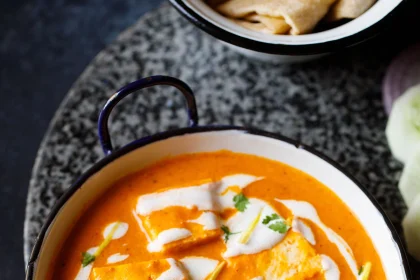Idli is one of the most healthiest and popular South Indian breakfast dish. These are soft, light, fluffy steamed round cakes made with a ground, fermented rice and lentil batter. Here I share my foolproof recipe with video and step-by-step photos that will help you in making the best idli. This Idli recipe is one of the earliest recipe from the blog which has been tried and tested with great results by many of our readers.
What is Idli
Idli is a soft, pillowy steamed savory cake made from fermented rice and lentil batter. The lentils used in making the idli batter are urad dal (hulled black gram).
Black gram is also known as matpe beans, urad beans. To make idli the off white colored husked/hulled black gram is used – it can be split or whole.
The lentils and rice are soaked first and then later ground separately. The batters are mixed together and seasoned with salt.
The batter is allowed to ferment until it increases in volume. Later the batter is steamed in a special and unique cookware traditionally used for making idli.
Idli is a traditional breakfast made in every South Indian household including mine. Idli is popular not only in the whole of India but outside India too.
It is naturally vegetarian, vegan, gluten-free and makes for one of the healthiest breakfast options served with Sambar and Coconut Chutney.
Ways to make Soft Idli
Firstly there are two basic ways you can make idli with the traditional method of soaking the ingredients, grinding them to a batter and fermenting.
Of course there are many variations you can do with the basic batter like adding spices, herbs, veggies etc but the basic, simple fermented batter is made with rice or idli rava and urad dal.
- With Idli Rice: Traditionally idli rice and urad dal are used to make the idli batter. Idli rice is parboiled rice and used specifically for making idli and dosa. This recipe post shares the method of making idli with idli rice and regular white rice.You can even make idli with short-grained rice. My mom makes one of the best idli with parmal rice. At times I also make idli with the traditional method of using only idli rice.
As I have mentioned above Urad dal is also known as black gram, urad bean and black matpe bean. With husks these lentils look black due to their black husks. With the husks removed they have creamish ivory or off white color and are also called as white lentils.
The urad dal that is used is the husked whole urad dal preferably unpolished. You can even use husked split urad dal.
- With Idli Rava: A second easier way is to use idli rava with urad dal. Idli rava is coarsely ground idli rice and is easily available in shops and online.
- Soaking rice and lentils: For making simple traditional idli, both the rice and the urad dal are rinsed a couple of times with fresh water and soaked separately for 4 to 5 hours.
- Quality of rice and urad dal: Make sure to use both rice and urad dal within their shelf-period. Always use urad dal which is fresh and within its shelf-life. Aged urad dal does not ferment well and makes the idli dense.
- Grinding: Then the lentils (urad dal) are ground to a soft, fluffy batter and the rice to a semi-fine consistency. Both the batters are mixed and allowed to ferment.
- Grinding Equipments: The grinding of the batters, can be done in a table-top stone wet-grinder or in a mixer-grinder. Most South Indian families have a table top stone grinder that they trust to make a fluffy idli batter.
- Table top stone grinder: Grinding in a stone grinder is helpful if making a large quantity of idli batter. The advantage of grinding in a stone grinder is that the urad dal batter gets ground really well and thus the idli batter ferments also well.The amount of water to be added in a stone-grinder is more than what is added in a mixer-grinder.
For ½ cup soaked urad dal, you can add about 1 cup water. Add water in parts while grinding urad dal. For 2 cups of soaked rice, add about 1.5 to 2 cups of water.
- Mixer-grinder: The lentils also grind well in a mixer-grinder or heavy duty blender like Vitamix. For smaller quantities, a mixer-grinder or blender works like a charm.Everyone does not have a stone grinder. So I have shared the detailed method on how to grind the batter in a mixer-grinder with plenty of tips and suggestions in the step-by-step guide below.
I have both a stone grinder and a mixer grinder. For smaller quantities, I use the mixie for grinding and for larger quantities I use the stone grinder.
- Fermentation: Both the ground lentil batter and rice batter are mixed thoroughly. Then the batter is kept to ferment overnight or for 8 to 9 hours or more till the batter doubles or triples in volume having a pleasant sour aroma. The fermentation largely depends upon the temperature and climate. A warm temperature is conducive for a good fermentation in the batter.
- Steaming: Special pans are used to steam the idli. You can buy these pans online. This idli pan is brushed or greased with some oil. The batter is poured in the pan and then steamed.
- Steaming time: The steaming time varies from 12 to 15 minutes. Idli should never be oversteamed as then they become dry and dense.
How to make Idli Batter
Soak Rice and Lentils
1. In a bowl or pan take 1 cup parboiled rice and 1 cup regular rice. Here I have used the Indian variety of sona masuri rice along with parboiled rice.
Instead of this proportion, you can also use overall 2 cups of idli rice OR 2 cups of parboiled rice (as shown in the video above).
2. Pick and then rinse both the rice varieties a couple of times in fresh water. Drain all the water and keep it aside.
3. Take ¼ cup thick poha (flattened rice or parched rice) in a bowl. Poha helps in making the idli soft and fluffy. If you don’t have poha then you can skip it.
4. Rinse the poha once or twice with fresh water.
5. Then add the poha to the rice. Add 2 cups of water. Mix very well and keep aside covered to soak for 4 to 5 hours.
6. In a separate bowl take ½ cup urad dal (husked black gram) along with ¼ teaspoon fenugreek seeds.
7. Rinse a couple of times in fresh water.
8. Add 1 cup water. Cover and soak for 4 to 5 hours.
9. Before grinding, drain the water from urad dal, but don’t throw away the water. Reserve the soaked water as we will be using this water for grinding or you can use fresh water for grinding.
Grind or Blend Rice and Lentils
10. In a wet grinder jar, add the urad dal. Initially add ¼ cup of the reserved water or fresh water.
11. And grind the urad dal for some seconds. Then add ¼ cup of the reserved soaked water or fresh water and continue to grind. The batter should be light and fluffy when completely ground.
12: Pour the urad dal batter in a deep pan or bowl.
13: Drain the water from the rice and poha. Add them in the wet grinder jar or in a powerful blender. I usually grind in two batches.
Depending on the capacity of your mixer-grinder or blender you can grind in two to three batches. If the mixie gets heated up while grinding, then stop and let it cool. Then continue with the grinding.
14: Use the reserved urad dal strained water or regular fresh water to grind the rice and poha too. Add water in parts and grind.
The rice can have a fine rava like consistency in the batter. A smooth batter is also fine. I usually add a total of ¾ cup of water while grinding rice. The rice batter should not be too thick or thin.
You can add about ¾ to 1 cup of water depending upon the quality of rice.
15: Now pour the rice batter in the bowl containing the urad dal batter.
16. Add 1 teaspoon of rock salt. Mix very well with a spoon or spatula. If you live in a cool or cold region, then do not add salt. Add salt later once the fermentation is done.
If you live in a hot or warm climate, then add salt as it does not allow the batter to get over fermented in the time duration of 6 to 8 hours.
Note that salt retards the fermentation process.
Ferment Idli Batter
17. Cover the bowl or container with a lid and keep the batter in a warm place. It should be left undisturbed for 8 to 9 hours. Don’t use an air-tight lid. In colder climate, keep the batter for a longer time – from 12 to 24 hours.
I have mentioned various tips below for the idli batter to ferment well. So do read this section below after step by step photos.
18. The batter the next morning. It will ferment and increase in volume. A well fermented idli batter will have a nice sour aroma with many tiny air pockets in the batter.
As soon as the batter is fermented you can begin with steaming the idli or keep the batter in the fridge if making later.
If you allow the fermented batter to remain at room temperature, it will ferment more and will become very sour with time.
How to Make Idli
19. Grease or brush the idli mould with oil all over evenly. Gently and lightly swirl the batter. Don’t overdo. Now with a spoon pour portions of the batter in the greased idli moulds.
20. Take your idli steamer or pressure cooker or electric cooker or Instant pot. Add some 2 to 2.5 cups water and heat the water until it comes to a light boil. Keep the idli mould in the steamer or pressure cooker. Steam for 12 to 15 minutes.
Timing will vary depending on the kind of equipment you have used. If using a pressure cooker, then cover the pressure cooker with its lid. Remove the vent weight/whistle from the lid. Steam the idlis for approx 12 to 15 minutes.
21. Check for doneness by carefully inserting a bamboo skewer or knife. If it does not come out clean, then keep again for a few more minutes.
When done remove the idli mould from the cooker. Don’t overcook as then they become dry. Dip a spoon or butter knife in water and slid them through the idlis. Remove and place the idlis in a warm container like a casserole.
22. Serve Idli hot or warm with sambar and coconut chutney.










